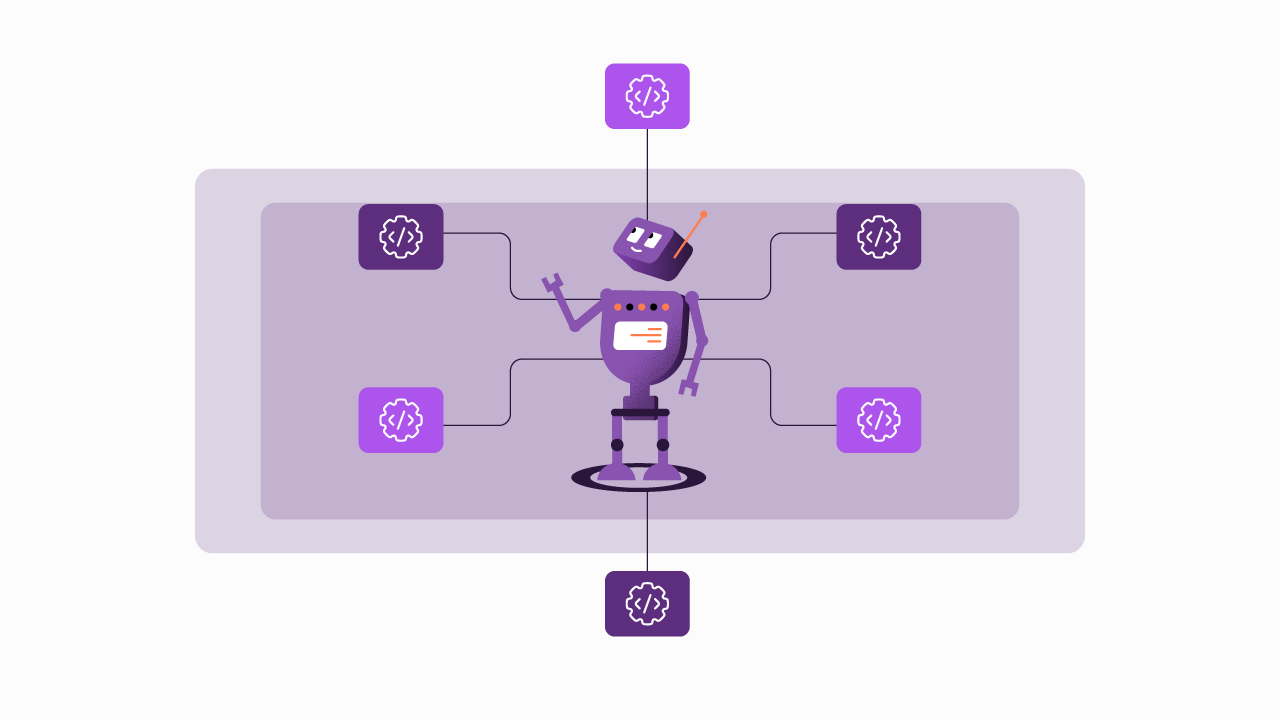Mastering API Governance Across Multiple Gateways
Large organizations are increasingly adopting multiple API gateways to manage services and scale their digital operations. In fact, Gartner predicts that by 2028, over 75% of these companies will be using two or more API gateways.
This multi-gateway landscape typically emerges from multicloud strategies, mergers and acquisitions, or autonomous team decisions. While this diversity offers flexibility, it also introduces significant challenges. Without proper API governance spanning these gateways, organizations risk elevated costs, security vulnerabilities, and compliance failures.
Read on to discover:
- What API governance across multiple gateways really means
- Challenges of managing API governance in complex IT environments
- How Sensedia delivers effective multi-gateway API governance
What Is API Governance Across Multiple Gateways or Federated Governance?
API governance across multiple gateways refers to the processes, policies, and tools that maintain consistency, security, and traceability for APIs distributed across different platforms (such as AWS, Oracle, embedded SaaS gateways, and legacy systems) without requiring a complete architectural overhaul.
The goal is to maintain a unified view of your API portfolio, apply policies consistently, and accelerate delivery through automation. This approach enables efficient API implementation, monitoring, and compliance while preventing a wide range of potential issues.
Key Challenges in Multi-Gateway API Governance for Complex IT Environments
Lack of Centralized Visibility
When APIs are scattered across multiple platforms, maintaining a unified view becomes difficult. This fragmentation makes it harder to track usage patterns, monitor performance, and assess security status, ultimately slowing down informed decision-making. Without centralized oversight, organizations also risk regulatory non-compliance with standards like GDPR, potentially damaging their reputation.
Fragmented Security Policies
Ensuring consistent application of authentication, encryption, and rate-limiting policies across all APIs presents a major challenge. Without this consistency, security gaps emerge and vulnerabilities multiply. The absence of unified API governance across multiple gateways significantly increases the risk of breaches.
Spiraling Operational and Maintenance Costs
Managing multiple gateways demands additional infrastructure, technical support, and ongoing maintenance. This complexity often leads to rework, redundancies, and duplicated APIs, making it harder to identify issues and reuse existing resources. The result is an inflated total cost of ownership.
Scalability Friction
Onboarding partners and integrating digital ecosystems becomes increasingly difficult in multi-gateway environments, hindering partner ecosystem development. This creates bottlenecks that ultimately degrade the end-user experience.
API Sprawl
API sprawl occurs when inadequate management leads to unstructured API growth, creating a disorganized environment where APIs are difficult to locate, secure, and maintain. This results in security risks, reduced operational efficiency, and slower innovation as teams lose control over their evolving API ecosystem.
Shadow APIs
Shadow APIs are active APIs that operate without IT team knowledge or oversight. Often created to accelerate tasks or as temporary workarounds, they typically lack proper documentation. These undocumented APIs pose serious security risks since they cannot be adequately protected or monitored for vulnerabilities.
Lack of Standardization in Security and Authentication Policies
Without clear, consistent rules for managing access to information and systems, vulnerabilities multiply. Organizations face real risks including data breaches, service interruptions, fraud, and financial losses.
Download our latest eBook on Multi-Gateway API Governance now
Sensedia's Expert Approach to Federated API Governance
Sensedia offers a proven approach to Federated API governance across multiple gateways, balancing centralized control with team autonomy. Our solutions provide advantages that extend far beyond basic API management:
SMART API Governance
Sensedia's SMART API Governance is an intelligent, low-code layer that enables custom workflow creation, consistent policy application, and impact analysis generation. It connects natively to leading market gateways, avoiding vendor lock-in.
With automated maturity scoring, the platform identifies policy violations and provides corrective guidance, ensuring continuous and efficient governance of APIs distributed across multiple gateways.
Interface Completeness
This exclusive feature displays documentation completeness for each API directly within the catalog. It enhances developer experience (DX), reduces errors, and increases reuse. All key factors in effective API governance across multiple gateways.
Plug-and-Play Connectivity
Sensedia implements a unified control plane without requiring rewrites or architectural replacements. This approach reduces risk, accelerates adoption, and delivers quick returns in environments with multiple gateways, clouds, and legacy systems.
The Bottom Line
API governance across multiple gateways reduces risk and total cost of ownership, standardizes security, and accelerates delivery, all without replacing your current gateways.
To learn how Sensedia's solutions deliver continuous compliance, unified visibility, and an enhanced developer experience (DX), contact our experts to schedule a technical demo.
Contact Sensedia Today to Get Started!
Begin your API journey with Sensedia
Hop on our kombi bus and let us guide you on an exciting journey to unleash the full power of APIs and modern integrations.
Related content
Check out the content produced by our team.
Embrace an architecture that is agile, scalable, and integrated
Accelerate the delivery of your digital initiatives through less complex and more efficient APIs, microservices, and Integrations that drive your business forward.





.svg)




.png)

